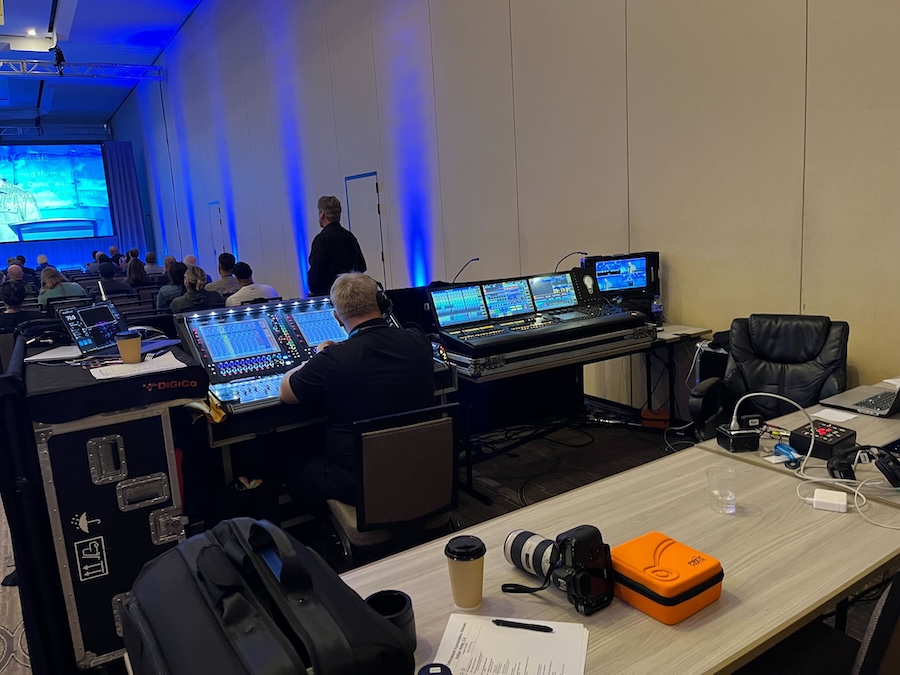Transform Your Event Success with Smart Timeline Management
When your event’s production schedule runs like clockwork, everything falls into place. But when it doesn’t, costs spiral, stress levels soar, and quality suffers.
At Technical Elements, we’ve seen firsthand how a well-structured production schedule becomes the backbone of successful events across Atlanta and nationwide.
Let’s explore why getting your production schedule right isn’t just about timing—it’s about transforming your entire event’s success.
SEE MORE: Stage Design & Other Considerations for Better Events
What Are the Hidden Costs of Poor Production Scheduling?
Think about this scenario: Your team arrives at the venue, ready to set up for a major corporate event. But there’s a problem. The loading dock isn’t available for another hour, putting you behind schedule immediately. Now your crew is idle, your timeline is compressed, and you’re paying for time that’s being wasted.
This isn’t just about one delayed hour. The ripple effects touch every aspect of your event:
- Your lighting team rushes through crucial focus and programming
- Sound checks get abbreviated, risking audio quality
- Your LED wall content testing gets cut short
- Rehearsal time shrinks, affecting presenters’ confidence
Each of these compromises doesn’t just impact quality—it hits your bottom line through overtime costs, rush fees, and potential equipment rental overages.
Here’s How to Build a Production Schedule That Works
A professional production schedule is a strategic tool that coordinates every moving piece of your event. Here’s what needs to be accounted for:
Load-In and Setup Windows
Start with your venue access times. When can the first truck arrive? When does the last piece of equipment need to be in place? These windows determine everything else. We always factor in realistic load-in times for different equipment types, from basic audio gear to complex LED installations.
Technical Integration Points
Your schedule needs clear markers for when each element must be operational. This includes power distribution, rigging points, audio systems, and video components. Each piece needs its own testing window before it integrates with other systems.
Staff Positioning and Breaks
People are the heart of your production. Your schedule must account for the following:
- Crew arrival times and shift changes
- Mandatory meal breaks (missing these can trigger overtime)
- Setup team coordination to prevent bottlenecks
- Technical rehearsal windows
- Show crew positions and rotation
Room Turnover Planning
Timing is crucial whether you’re working with a single room or multiple spaces. Your schedule should clearly outline the following:
- When each room becomes available
- Setup completion deadlines
- Event runtime requirements
- Breakdown windows
- Final clear-out times
Work Smarter, Not Harder
At Technical Elements, we’ve learned that the best production schedules do more than just time management. They become tools for:
Resource Optimization
You eliminate costly idle periods by carefully plotting equipment and crew arrival times. When your LED wall team knows exactly when the rigging will be ready, they arrive at the perfect moment to begin their work.
Quality Assurance
Build in adequate testing windows. Those extra minutes spent fine-tuning audio coverage or adjusting lighting focuses save hours of potential troubleshooting later.
Cost Control
A well-structured schedule helps control costs by:
- Minimizing overtime through efficient crew scheduling
- Reducing equipment rental periods by optimizing setup and strike times
- Avoiding rush fees and emergency calls through proper planning
- Preventing venue overtime charges with clear load-out planning
Turn Your Next Atlanta Event’s Timeline Into a Success Story
Ready to transform your event? Don’t forget about efficiency. Let Technical Elements help you create a production schedule that doesn’t just manage time but maximizes your event’s potential.
Contact us here now to discover how our expertise in production scheduling can elevate your next event while keeping costs under control.

